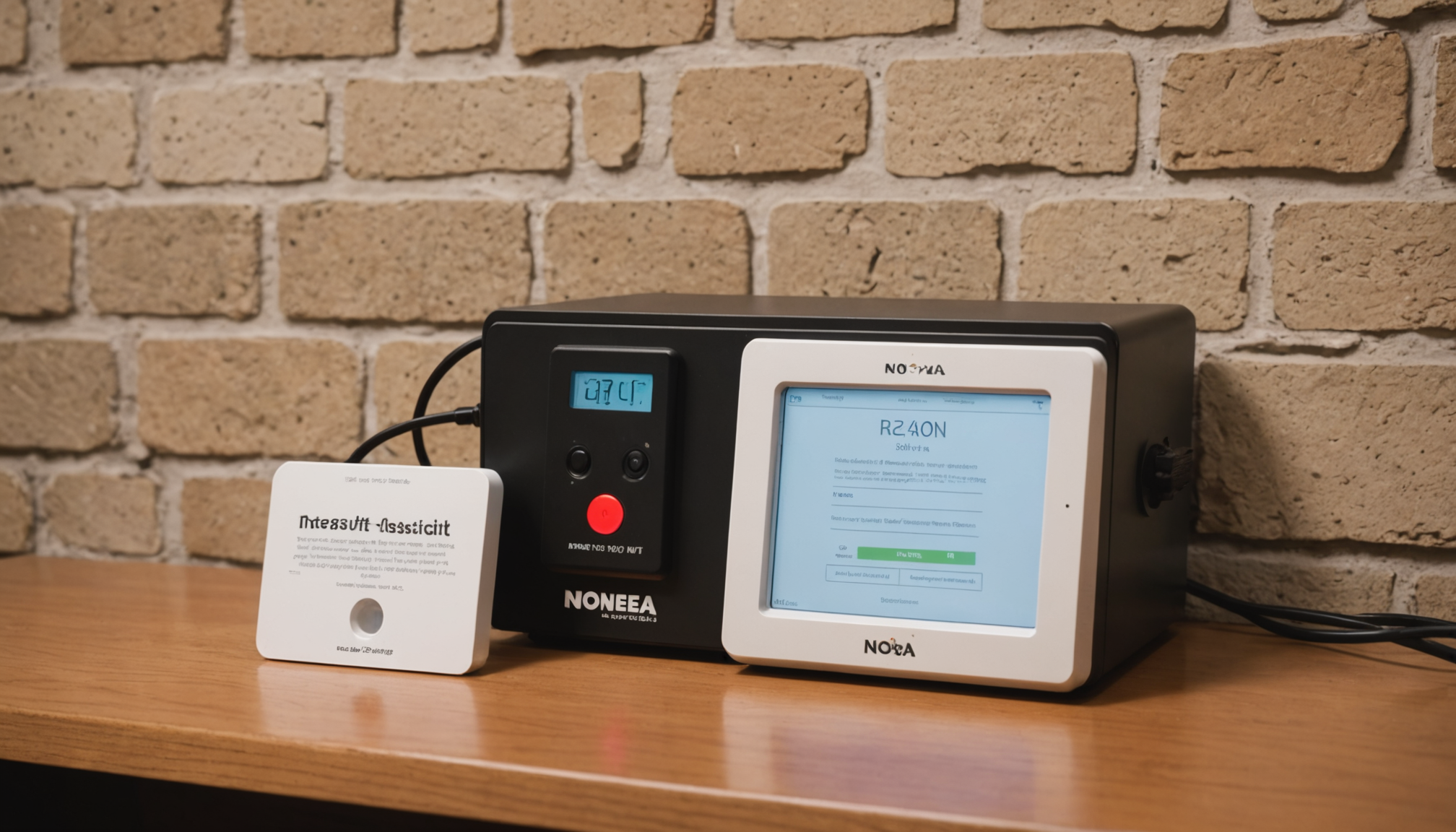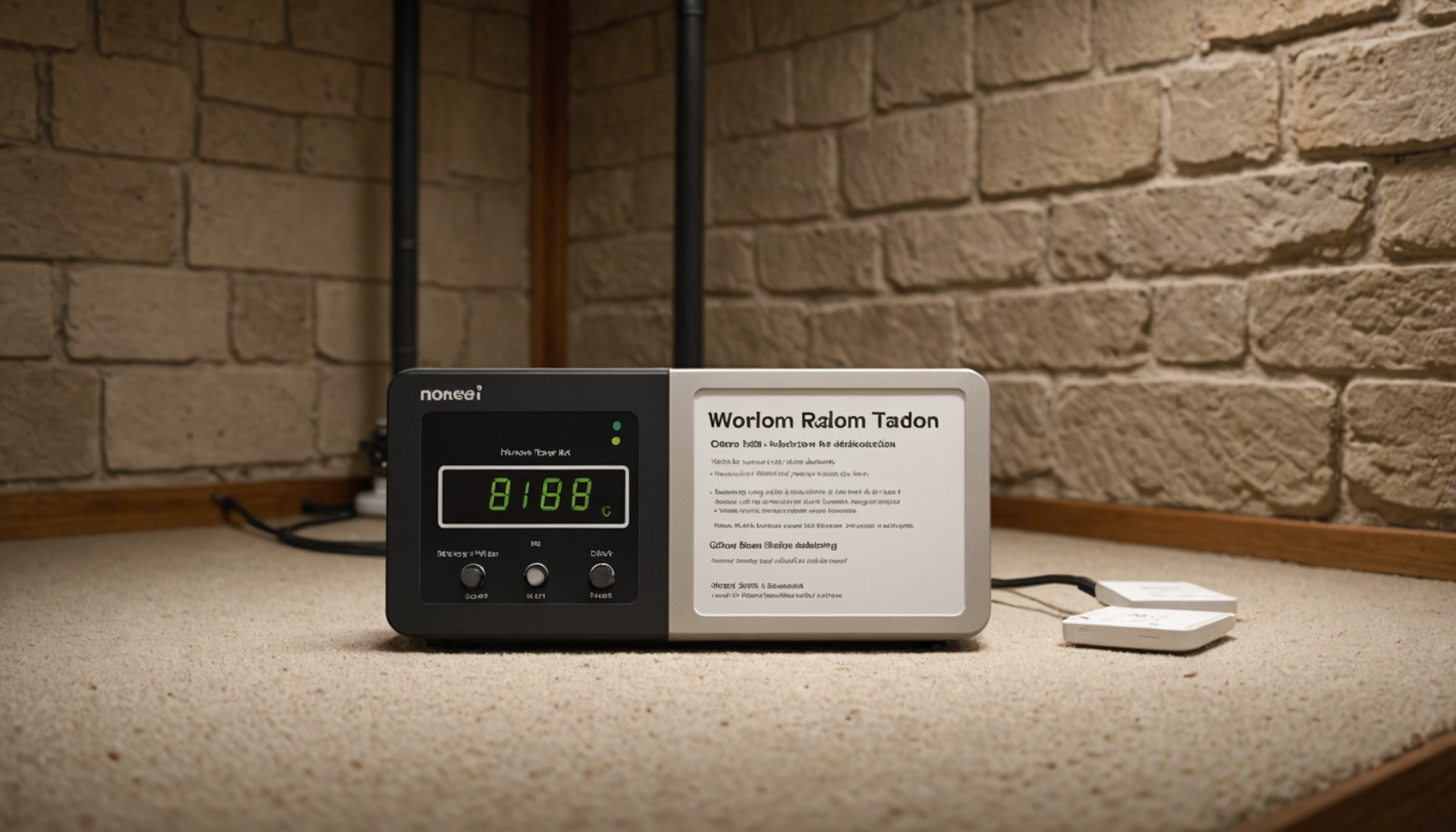Radon, a colorless and odorless radioactive gas, poses significant health risks when it accumulates in homes. In Missouri, where geological conditions can contribute to elevated radon levels, testing for this harmful gas is a critical safety measure for homeowners. According to the Environmental Protection Agency (EPA), radon is the second leading cause of lung cancer in the United States, making testing an essential step in ensuring the safety of your home.
For homeowners in Missouri, understanding how to effectively test for radon is crucial. The local geology, characterized by karst landscapes and limestone formations, can facilitate the movement of radon from the ground into buildings. Awareness and proactive testing can provide peace of mind and protect residents from the potential health risks associated with radon exposure. As a homeowner, your first line of defense against radon is conducting a reliable test to determine the level of radon present in your environment.
There are several methods available for testing radon levels in Missouri homes, each varying in complexity, cost, and accuracy. Home test kits are a popular choice for many residents due to their accessibility and ease of use. These kits, widely available at local hardware stores or online, are designed for short-term testing and typically involve placing the device in the lowest livable area of your home for two to seven days. After this period, the device is sent to a laboratory for analysis, providing a snapshot of the radon levels present in your home.
For more precise and long-term insights into radon levels, long-term radon test kits are recommended. These tests are left in place for more than 90 days, providing a more comprehensive understanding of your home’s average radon level. Given Missouri’s fluctuating seasonal climate, long-term tests account for variations in radon levels due to changes in temperature and humidity, giving a more accurate representation of potential exposure over time.
Professional radon testing services offer another layer of precision and expertise. Certified radon measurement specialists use sophisticated equipment to conduct continuous radon monitoring, offering homeowners highly accurate readings. These professionals follow protocols established by organizations such as the EPA and the American Association of Radon Scientists and Technologists (AARST), ensuring the testing process adheres to the highest standards of accuracy and safety.
Regardless of the method chosen, initiating radon testing in your Missouri home is a critical step toward safeguarding your health. Understanding and interpreting the results of these tests empower homeowners to make informed decisions about necessary mitigation measures. By prioritizing radon testing, Missouri residents can mitigate the risk that this silent intruder poses to their families and loved ones.
Understanding radon level readings
Interpreting radon level readings is essential for determining the next steps in ensuring the safety of your home and family. Radon levels are typically measured in picocuries per liter (pCi/L) of air. The Environmental Protection Agency (EPA) recommends taking action to reduce radon levels if readings are at or above 4 pCi/L. However, even levels below this threshold can pose some risk, and since there is no known safe level of radon exposure, homeowners may choose to mitigate at lower levels to further ensure safety.
When you receive your radon test results, it’s important to understand what these numbers mean for your home’s safety. A consistent reading above 4 pCi/L signals the need for immediate action, either through mitigation efforts or further professional assessment. It’s crucial to note that radon levels can fluctuate based on various factors, including the time of year, weather conditions, and ventilation within the home. Therefore, repeat testing can be beneficial, especially when initial tests show levels that are close to the 4 pCi/L threshold.
Short-term tests might show temporary peaks due to weather conditions or indoor activities, while long-term testing provides a more accurate average level. This comprehensive understanding of your home’s radon levels allows you to better assess the actual risk to the occupants’ health and determine whether mitigation is necessary.
Several factors can influence radon readings, such as the home’s foundation type or the presence of any earth-contact elements. Missouri’s specific geographical and architectural factors could also affect how radon enters and accumulates in homes. Consulting with a professional can provide insights tailored to your unique situation, ensuring that any elevated readings are addressed effectively.
- Radon levels are measured in picocuries per liter (pCi/L), with 4 pCi/L being the action level recommended by the EPA.
- Due to natural fluctuations, long-term testing is often more reliable than short-term testing for understanding average radon levels in your home.
- Seasonal changes in Missouri can impact radon levels; therefore, testing at different times of the year can provide a clearer picture of your exposure risk.
- If initial test results are at or near the action level, consider follow-up testing or a professional assessment to confirm the need for mitigation.
- Adapt your mitigation strategy based on specific factors in your home, such as foundation type and ventilation practices, to effectively reduce radon levels.
Health risks associated with radon exposure
Exposure to radon presents serious health risks, primarily due to its classification as a known carcinogen. When inhaled, radon decay products can damage lung tissue, which increases the risk of lung cancer over time. It is the second leading cause of lung cancer in the United States, surpassed only by smoking, and is especially detrimental to smokers, as concurrent exposure significantly amplifies their already heightened risk.
Radon affects lung tissue at a molecular level. Its radioactive particles, when breathed in, lodge in the lining of the lungs and continually bombard the cells with radiation. Over extended periods, this exposure can cause changes at a genetic level, potentially leading to the development of cancerous cells. Studies have shown a clear correlation between radon exposure levels and the incidence of lung cancer, establishing that higher radon concentrations significantly increase this risk.
Children might be at higher risk for harm from radon due to their developing lungs and higher respiratory rates which can potentially increase exposure levels. Some research also suggests that they might be more biologically sensitive to radiation. Pregnant women can also face increased risks, as fetal development might be compromised under high exposure conditions.
Residents in Missouri should be particularly vigilant as the state exhibits geological characteristics conducive to elevated radon levels. The presence of radon is often higher in homes built on soil that allows for easy movement of gases from the ground into the home’s foundation. Furthermore, in Missouri’s karst regions, which are abundant in caves, sinkholes, and limestone formations, radon infiltration can be more pronounced, necessitating rigorous testing protocols.
While there is no known safe level of radon exposure, the Environmental Protection Agency advises homeowners to mitigate if levels exceed 4 picocuries per liter (pCi/L). For those experiencing persistent exposure above this level, taking swift action to reduce radon concentrations is crucial to diminishing potential health impacts.
To minimize health risks, regular testing and adoption of effective mitigation strategies are important. If testing reveals elevated levels, employing techniques such as soil suction, sealing of foundation cracks, and improving home ventilation can substantially lower radon concentrations. For Missouri residents living in areas recognized for high radon prevalence, consulting with a professional radon mitigation service ensures these strategies are tailored effectively to specific home conditions.
Education and awareness about the risks of radon are critical. Homeowners should not only commit to initial testing but also consider regular follow-up tests, as this ensures continued safety and confirms the effectiveness of any mitigation measures applied. Understanding radon’s potential impact empowers homeowners to take informed steps towards protecting the health of their families and ensuring long-term safety within their homes.
Effective radon mitigation strategies
Implementing effective strategies to mitigate radon in Missouri homes is crucial, especially given the state’s geological predisposition to elevated radon levels. Once testing reveals elevated radon concentrations, homeowners can employ several proven methods to reduce this invisible threat.
One of the most prevalent and effective mitigation techniques is active soil depressurization. This approach involves using a vent pipe system and a fan to draw radon from beneath the house and expel it outside. The method helps prevent radon from entering the home in the first place, maintaining indoor air quality. Homes with different foundation types, such as basements, crawlspaces, or slabs, might require slight adaptations of this technique. In homes with crawlspaces, for instance, similar depressurization is achieved by covering the ground with a high-density plastic sheet and extracting air from beneath it.
Another strategy involves sealing cracks and other openings in the foundation or walls. While this is not a standalone solution, as sealing alone does not adequately reduce radon levels, it can complement other methods by reducing the flow of radon into the home and optimizing the overall effectiveness of active mitigation systems.
Improving the ventilation of a building can also play a role in reducing radon levels. By increasing the airflow rate in the home, radon concentrations can be diluted. Heat Recovery Ventilators (HRVs) or Energy Recovery Ventilators (ERVs) can be used to maintain energy efficiency while improving ventilation. These systems not only help lower radon levels but also enhance the overall air quality by replacing stale indoor air with fresh outdoor air.
For newly constructed homes in Missouri, incorporating radon-resistant construction techniques can preclude radon issues before they arise. These proactive measures include laying a gas-permeable layer beneath the foundation, installing plastic sheeting under slabs, and ensuring airtight sealing of the foundation and any openings for pipes or utilities.
Summarizing, for Missouri residents, selecting the right mitigation strategy involves considering the home’s specific conditions and radon reading levels. Homeowners should remain proactive by combining multiple techniques for a comprehensive approach to keep radon levels low, safeguarding their family’s health. Embrace the confidence that comes with knowing your home is secure from radon’s hidden dangers, and remember, initial testing is just the beginning. Consistent monitoring and maintenance of mitigation systems are vital steps in sustaining a safe living environment. Take action today and let peace of mind follow—your home in Missouri can be a sanctuary from radon with the right knowledge and tools.
Choosing a professional radon mitigation service
- How do I know if a radon mitigation service is reputable in Missouri?
- Look for a company that employs certified professionals who follow EPA and AARST standards for radon mitigation. Additionally, reputable services should offer clear pricing, provide references or reviews from past clients, and explain the mitigation process in detail.
- Can I mitigate radon in my home myself, or should I hire a professional?
- While some homeowners may attempt DIY radon mitigation, it is generally advisable to hire a professional, especially for homes with complex foundation designs. Professionals have the expertise and equipment necessary to ensure effective and long-term radon reduction.
- What qualifications should I look for in a radon mitigation contractor?
- Ensure that the contractor is certified by a recognized organization such as the National Radon Proficiency Program (NRPP) or the National Radon Safety Board (NRSB). Certification indicates that the contractor has undergone proper training and adheres to industry standards.
- How long does the radon mitigation process typically take?
- The duration of the radon mitigation process can vary depending on the complexity of the home’s design and the mitigation method used. On average, installation can take a few hours to a day, but the contractor should give a more precise timeline based on your specific situation.
- Will radon mitigation systems affect my home’s energy efficiency?
- A properly installed radon mitigation system should not significantly affect your home’s energy efficiency. Advanced systems like Heat Recovery Ventilators (HRVs) or Energy Recovery Ventilators (ERVs) can even improve indoor air quality while maintaining energy efficiency.

